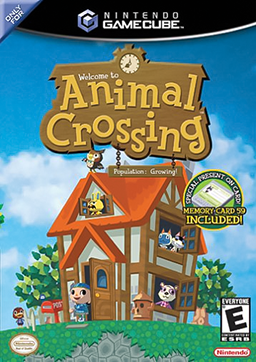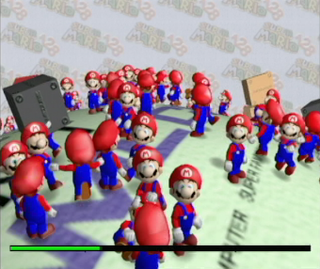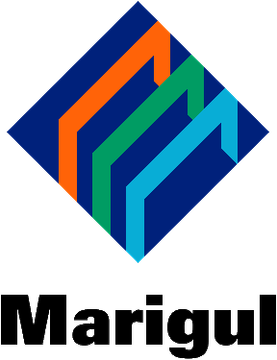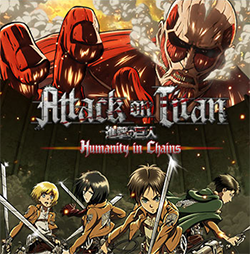
The Legend of Zelda: Ocarina of Time is a 1998 action-adventure game developed and published by Nintendo for the Nintendo 64. It was released in Japan and North America in November 1998 and in PAL regions the following month. Ocarina of Time is the first game in The Legend of Zelda series with 3D graphics.

The Legend of Zelda: Majora's Mask is a 2000 action-adventure game developed and published by Nintendo for the Nintendo 64. It was the second The Legend of Zelda game to use 3D graphics, following Ocarina of Time (1998). Designed by a creative team led by Eiji Aonuma, Yoshiaki Koizumi, and Shigeru Miyamoto, Majora's Mask was completed in less than two years. It featured enhanced graphics and several gameplay changes, but reused elements and character models from Ocarina of Time, which the game's creators called a creative decision made necessary by time constraints.

The 64DD is a magnetic floppy disk drive peripheral for the Nintendo 64 game console developed by Nintendo. It was announced in 1995, prior to the Nintendo 64's 1996 launch, and after numerous delays was released in Japan on December 13, 1999. The "64" references both the Nintendo 64 console and the 64 MB storage capacity of the disks, and "DD" is short for "disk drive" or "dynamic drive".

Animal Crossing, known in Japan as Dōbutsu no Mori+, is a 2001 social simulation game developed and published by Nintendo for the GameCube. It is the first game in the Animal Crossing series, and is also an enhanced version of the Nintendo 64 game Dōbutsu no Mori, which was only released in Japan earlier the same year, and was followed by another edition, Dōbutsu no Mori e+, in 2003.

The Game Boy Camera, released as Pocket Camera in Japan, is a Nintendo accessory for the handheld Game Boy game console. It was released on February 21, 1998, in Japan, and manufacturing ceased in late 2002. As a toy for user-generated content, it can be used to shoot grayscale photographs, edit them or create original drawings, and transfer images between GBC units or to the 64DD art game suite Mario Artist. The accessory featured a 180°-swivel front-facing camera that allowed users to capture selfies. Its images can be printed to thermal paper with the Game Boy Printer. The GBC's cartridge contains minigames based on Nintendo's early games such as the arcade video game Space Fever and the Game & Watch handheld game Ball, and a chiptune music sequencer; photographers have embraced its technological limitations as artistic challenges.

Pokémon Snap is a 1999 first-person photography game with rail shooter style gameplay mechanics developed by HAL Laboratory and published by Nintendo for the Nintendo 64. It was first released in Japan in March 1999 and was later released in July 1999 in North America and in September 2000 for PAL regions. It is a spin-off game in the Pokémon series, being one of the first console-based games for it, and featuring many Pokémon rendered for the first time in real-time 3D. The game was re-released for the Wii's Virtual Console in December 2007, for the Wii U's Virtual Console in 2016, and for the Nintendo Switch Online + Expansion Pack in June 2022.

The Transfer Pak is a removable accessory for the Nintendo 64 controller that fits into its expansion port. When connected, it allows for the transfer of data between supported Nintendo 64 (N64) games and Game Boy or Game Boy Color (GBC) games. By using the Transfer Pak, players can unlock additional content in compatible games; the Pokémon Stadium games, with which the Transfer Pak was initially bundled for sale, also feature the ability to emulate specific Game Boy Pokémon titles for play on the N64.
Nintendo Space World, formerly named Shoshinkai and Famicom Space World, was an annual video game trade show hosted by Nintendo from 1989 to 2001. Its three days of high-energy party atmosphere was the primary venue for Nintendo and its licensees to announce and demonstrate new consoles, accessories, and games. Anticipated and dissected each year with hype and exclusivity, it was a destination for the international video game press, with detailed developer interviews and technology demos.

The GameCube – Game Boy Advance cable (DOL-011) is a video game accessory manufactured by Nintendo which is used to connect the Game Boy Advance (GBA) handheld console to the GameCube (GCN) home console. Depending on the games it is used with, the cable may facilitate transferring data between related games, unlocking additional content, or turning the GBA into a controller or second screen.

Super Mario 128 was a codename for two different development projects at Nintendo. The name was first used in 1997 for a sequel to Super Mario 64 for the 64DD, which was canceled. The name was reused for a GameCube tech demo at the Nintendo Space World trade show in 2000. Nintendo gradually incorporated the demonstrated graphics and physics concepts into the rapid object generation of Pikmin (2001), the physics of Metroid Prime (2002), and the sphere walking technology of The Legend of Zelda: Twilight Princess (2006) and Super Mario Galaxy (2007). The Super Mario 128 demo led to widespread analysis, rumors, and anticipation in the media throughout the 2000s.

Cubivore: Survival of the Fittest, known in Japan as Dōbutsu Banchō, is an action-adventure video game co-developed by Saru Brunei and Intelligent Systems for the GameCube. It was originally published by Nintendo only in Japan on February 21, 2002. After Nintendo expressed intentions to not release the game in other regions in the world, Atlus USA localized the game for North America and released it on November 5, 2002.

Mario Artist is an interoperable suite of three games and one Internet application for Nintendo 64: Paint Studio, Talent Studio, Polygon Studio, and Communication Kit. These flagship disks for the 64DD peripheral were developed to turn the game console into an Internet multimedia workstation. A bundle of the 64DD unit, software disks, hardware accessories, and the Randnet online service subscription package was released in Japan starting in December 1999.

Tail of the Sun, known in Japan as Taiyō no Shippo: Wild, Pure, Simple Life, is an action role-playing video game developed by Artdink for the PlayStation. It was released in Japan in 1996 by Artdink and North America in 1997 by Sony Computer Entertainment. It was created by Kazutoshi Iida, who worked on Aquanaut's Holiday and would later work with Nintendo on Doshin the Giant.

Aquanaut's Holiday is a video game for the PlayStation developed by Artdink. The game is an underwater simulation in which the player assumes the role of an overworked marine explorer who returns to the water for pleasure after having brought harmony to the world's oceans. Aquanaut's Holiday was followed by a few Japan-exclusive sequels on various PlayStation consoles.

The GameCube is one of Nintendo's home video game consoles and part of the sixth generation of video game consoles. Although the competing PlayStation 2 and Xbox consoles supported substantial amounts of online games, the GameCube had only eight games with internet or local area network (LAN) support. Nintendo never commissioned any servers or internet services to interface with the console, but allowed other publishers to do so and made them responsible for managing the online experiences for their games. Nintendo remained pensive with its online strategy for the duration of the GameCube's lifespan, defiant of growing interest from players and the success of Microsoft's Xbox Live online service. Company leaders including Shigeru Miyamoto and Satoru Iwata based their stance on concerns with maintaining quality control over their games and doubts that players would want to pay subscription fees.

Marigul was a Japanese corporation created and jointly owned by video game company Nintendo Co., Ltd. (40%) and media company Recruit (60%). Its name is a combination of Nintendo's mascot Mario and Recruit's mascot Seegul.
Nintendo 64 accessories are first-party Nintendo hardware—and third-party hardware, licensed and unlicensed. Nintendo's first-party accessories are mainly transformative system expansions: the 64DD Internet multimedia platform, with a floppy drive, video capture and editor, game building setup, web browser, and online service; the controller plus its own expansions for storage and rumble feedback; and the RAM-boosting Expansion Pak for big improvements in graphics and gameplay. Third-party accessories include the essential game developer tools built by SGI and SN Systems on Nintendo's behalf, an unlicensed SharkWire online service, and unlicensed cheaper counterparts to first-party items. In the fifth generation of video game consoles, the Nintendo 64 had a market lifespan from 1996 to 2002.
The development of Mother 3, a role-playing video game from Nintendo, spanned a total of twelve years between 1994 and 2006 with a three year gap in between, and spanned four consoles and multiple delays. Following the commercial success of its predecessor, Mother 2, Mother series creator Shigesato Itoi was given the previous game's development team.

Attack on Titan: Humanity in Chains, known in Europe as Shingeki no Kyojin: Humanity in Chains, is an action game developed and published by Spike Chunsoft for the Nintendo 3DS, based on Hajime Isayama's Attack on Titan manga series. The game was originally released in Japan on December 5, 2013, with an updated version, Attack on Titan: Jinrei Saigo no Tsubasa CHAIN, released on December 4, 2014. This version of the game was localized by Atlus and released on the Nintendo eShop in North America on May 12, 2015, and in Europe on July 2, 2015.
Giles Goddard is an English video game programmer. He was one of the first Western employees at Nintendo, programming the Mario face in Super Mario 64, and working on titles such as Star Fox, 1080° Snowboarding, and Steel Diver. In 2002, he founded Vitei, a video game developer based in Kyoto, Japan, and is CEO.
















